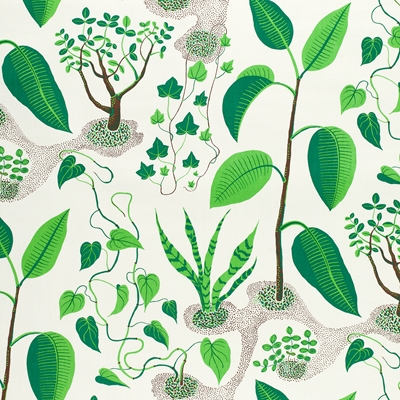Josef Frank worked in New York from 1941-1946. Field manuals and botanical dictionaries inspired this and many of the other prints, which he designed during this time. The Window print is comprised of common houseplants. Perhaps some of them were in the windowsills of Josef Frank and his wife Anna’s Manhattan apartment in Park Terrace Gardens.
Josef Frank’s textiles with the 100 linen designation are made of a thin linen that is best suited for curtains.
Read more about screen printing in Svenskt Tenn's magazine.
Designer
Josef Frank


Josef Frank grew up in Vienna and studied architecture at Technische Hochschule (the Vienna University of Technology) in 1903 – 1908. In the 1920s he designed housing estates and large residential blocks built around common courtyards in a Vienna with severe housing shortages. In 1925, he founded the Haus & Garten interior firm together with architect colleague Oskar Wlach. Svenskt Tenn hired Josef Frank in 1934 and just a few years later he and Estrid Ericson made their international breakthrough. Although he was already 50 when he left the burgeoning Nazism in Vienna for Sweden, Frank is considered one of Sweden’s most important designers. Read more














































































